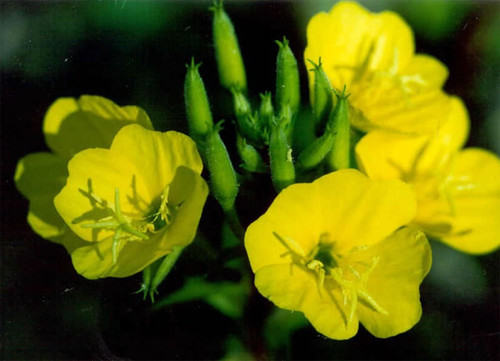
Plants provide us with many things that we use on a daily basis – from the buildings in which we live and work, to our clothing and food. For flowering plants to thrive and reproduce, they often rely on pollinators to transport pollen between flowers.
Pollination ultimately results in fruits and seeds, ranging from the strawberries and almonds in your breakfast to the tomatoes in your pasta sauce. While scientists know a lot about honeybees, very little is known about many other pollinators – bats, birds, bees, butterflies, moths, flies, etc. – that are essential to pollinating wildflowers and native plants.
Led by three scientists at the Chicago Botanic Garden, Krissa Skogen, Jeremie Fant and Norm Wickett, and with funding from the National Science Foundation, a team of scientists from 11 institutions is undertaking a large-scale research project to understand more about a unique group of plants and their associated pollinators: the evening primrose family (Onagraceae).
The team will share their results with botanists in the U.S. Forest Service so that results can be applied to land management practices to help the evening primrose and their associated moths continue to be resilient and thrive from generation to generation.
The flowers of the plant are pollinated by hawkmoths and bees. Evening primroses also interact with a special group of insects, the parasitic moths, whose caterpillars eat flowers and seeds. Researchers on this project will use their data to understand the roles that both pollinator and parasite insect visitors may have played in the evolution of the evening primroses, of which more than 400 species occur across the western United States.
“A major goal of the project is to determine if variation in floral scent, shape, color and size can explain why there are so many species of evening primroses in the western U.S.,” said Skogen. “The team also will determine the role that pollinators and parasites have played in shaping these floral characteristics.”
Many evening primrose species have flowers that open at night and are pollinated by hawkmoths, which fly at night and are attracted to flowers by their sweet fragrance and light color (white or yellow). The color also allows for greater night-time detection. However, there are also species with flowers that open in the morning and are primarily pollinated by bees.
In general, bees are not attracted to flowers by scent, and it is suspected that many of these morning-blooming plants do not produce a strong fragrance. What the team finds particularly interesting is that both the hawkmoth pollinators and parasitic moths are likely attracted to flowers in part by their scent. The specific scent of a flower, therefore, may be the result of evolutionary forces (pollinators and parasites) acting in opposite directions!
“What I find particularly interesting and exciting about this project is that we tend to think that pollinators are the major reason that flowers emit a fragrance, but perhaps floral parasites play an equally important role,” Skogen said. “These ‘forgotten parasites’ have largely been left out of pollination studies thus far.”
Across the western U.S., the team, which includes two postdoctoral scientists, research assistants, and graduate and undergraduate students, is collecting data on floral shape and size, nectar and scent as well as conducting genetic analyses of all three groups – the plants, their hawkmoth pollinators, and the parasitic moths.
To date, postdoc Rick Overson and two research assistants have collected data on both the Ashley and Dixie national forests in Utah.
“It is such an exhilarating experience being out in the incredible deserts and mountains of the West, and seeing such complex and choreographed interactions between evening primroses and their insect associates,” Overson said. “Being in nature, and focusing so intensely on a particular group of organisms for an extended period of time, makes you aware of previously unknown patterns right beneath your feet. Within a single species of flower, if you move from one population to another, the rules that dictate what happens between a pollinating or parasitic insect and its plant host, may be the same or— may change completely. These complex interactions ultimately shape the evolutionary destiny of participating species."
Understanding the dynamics among plants, pollinators and parasites is essential for documenting and conserving biodiversity and may guide specific conservation actions in the face of changing threats, such as habitat alteration or climate change.
These studies support the June 20, 2014, Presidential Memorandum “Creating a Federal Strategy to Promote the Health of Honey Bees and Other Pollinators,” which endorses conservation of native pollinators and their host plants on national forests and grasslands.





